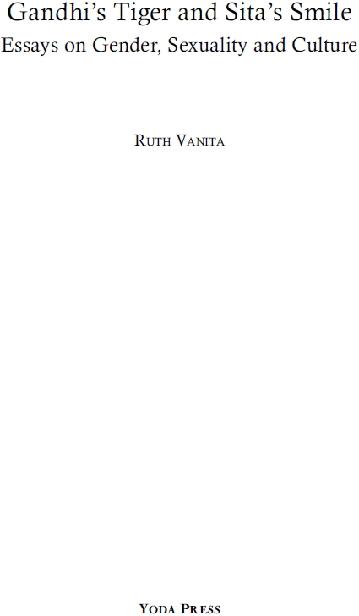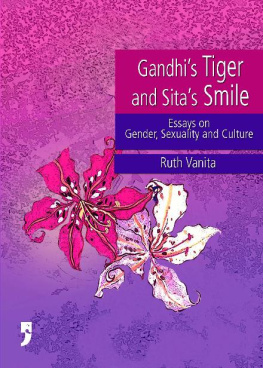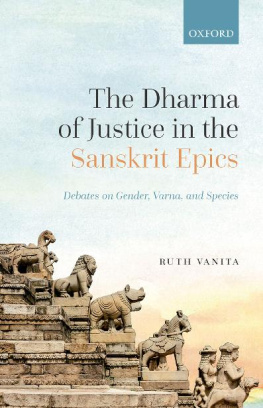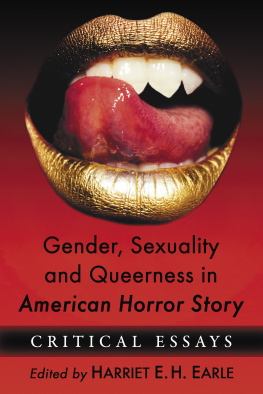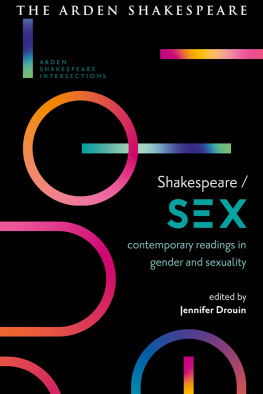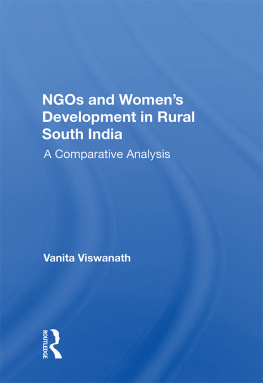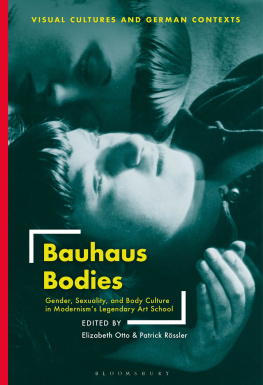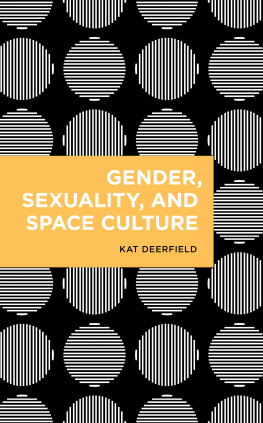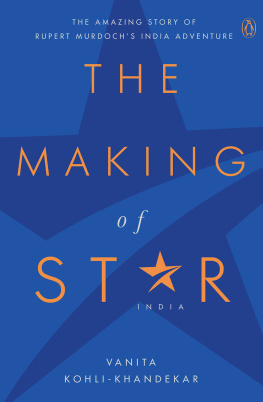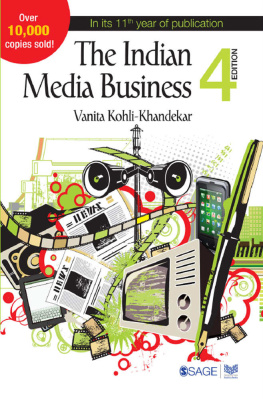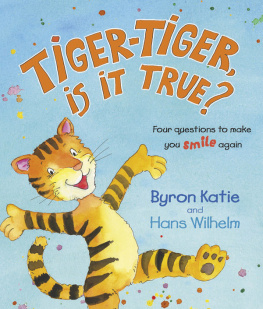For Saleem Kidwai
they have seemed to be together, though absent; shook hands, as over a vast; and embraced as it were from the ends of opposed winds.
C ontents
P reface
In 1999, I wrote an essay entitled Thinking Beyond Gender in India, which discussed questions of gender and sexuality in the context of Indian womens movements. The essay was reprinted thereafter and appears in a revised form in this volume. The remaining essays in this collection, written over the last five years, go beyond that beyond, to interrogate a variety of Indian texts and contexts along intersecting axes of gender, nation, and desire, addressing both the material and the representational. A couple of these essays grew out of seeds planted during my years at Manushi . Most others emerged from further research in areas that first opened up to me while working on Same-Sex Love in India and my subsequent books, Queering India and Loves Rite: Same-Sex Marriage in India and the West . All have profited from my interactions with colleagues as well as students in the Indian and the American academies, and activists in both countries.
Intertextuality is a primary theme in these essays. I am interested in the ways in which medieval texts speak to each other and draw on earlier canonical works, rewriting and transforming narrative in a spirit of respectful conversation. In very different registers, modern texts, such as nineteenth-century poetry and twentieth-century fiction and cinema, also converse with each other and with older texts. Another equally interesting but distinctly different area of enquiry addressed in these essays is the way texts are received in later periods or by other cultures in the same period.
I have tried, throughout, to remain aware that human subjects, though shaped by categories such as age, sex, gender, sexuality, physical abilities, class, caste, cultural background, nationality, and race, are not wholly contained by them. The multiple dimensions and shifting aspects of human existence blur and exceed even the most apparently fixed categories, such as biological sex (as the advocacy movements of intersexed people, formerly known as hermaphrodites, now remind us); humans also often move between categories, create new categories, and construct varied meanings for existing categories. This fluidity permeates textual representation as well; I am interested, therefore, not in judging texts by the categories (such as gender, caste, class) into which the putative authors supposedly fit, but by the debates, affiliations and visions for change that the texts represent.
A word about style and format. Written at different times and places, in different states of mind, these essays reflect my aspiration to write in a style informed by scholarship yet accessible to the general reader. I depart from the convention of surveying the scholarly terrain in an introduction; many of the issues (class, caste, communalism, nationalism, globalisation) routinely raised in such a survey are implicitly or explicitly addressed in the essays that follow. I prefer that readers encounter my interventions in these contested intellectual territories in the local instance, with reference to particular texts or events, rather than in the abstract.
All translations are by me unless otherwise indicated. The themes under which the essays are grouped are intended as suggestions, not watertight compartments. These essays wander across temporal, disciplinary and linguistic lines; the thread that holds them together may be summed up in E.M. Forsters epigraph, Only Connect.
A cknowledgements

The following essays appeared in somewhat different form in anthologies and journals; all of the essays have been revised and some have been rewritten for publication here. I thank the editors of these anthologies and journals and the anonymous readers whose comments helped me refine the essays. Thinking beyond Gender in India, appeared by the same title in Gender and Politics in India , edited by Nivedita Menon (New Delhi: Oxford University Press, 1999), pp. 52939, and was reprinted in Feminism in India , edited by Maitrayee Chaudhuri (New Delhi: Kali for Women & Women Unlimited, 2004), pp. 6979. The Self Has No Gender: A Female and A Male Scholar Debate Womens Status in the Mahabharata . appeared as The Self is Not Gendered: Sulabhas Debate with King Janaka, in NWSA Journal , Volume 15, Number 2 (Summer 2003), pp, 7693. A brief version also appeared in the magazine Hinduism Today . Gandhis Tiger: Multilingual Elites, the Battle for Minds, and English Romantic Literature in Colonial India appeared by the same title in Postcolonial Studies , Volume 5, Number 1 (2002), pp. 95110. A Rose by Any Other Name: The Sexuality Terminology Debates contains material from my Introduction to Queering India: Same-Sex Love and Eroticism in Indian Culture and Society , edited by myself (New York: Routledge, 2002), and some materials from the Note on Methodology in Loves Rite: Same-Sex Marriage in India and the West (New York: Palgrave; New Delhi: Penguin, 2005). Whatever Happened to the Hindu Left? appeared by the same title in Seminar: the Monthly Symposium , April 2002.
Some of the materials in God as Sakhi : Medieval Poet Janabai and Her Friend Vithabai appeared in my essay, Three Maharashtrian Poets: Muktabai, Janabai, Bahinabai, in Manushi , No. 50 (Tenth Anniversary Issue on Women Bhakta Poets), and in an expanded and rewritten form as At All Times Near: The Figure of the Sakhi and Love between Women in Two Medieval Indian Devotional Texts, in Same-Sex Love and Desire among Women in the Middle Ages , edited by Francesca Canade Sautman and Pamela Sheingorn (New York: Palgrave, 2002). Some of the materials in Gender, Language and Genre: Hindus, Muslims, Men, Women and Lesbian Love in Nineteenth-Century Urdu Rekhti Poetry appeared in Married Among their Companions: Female Homoerotic Relations in Nineteenth-Century Urdu Rekhti Poetry in India in the Journal of Womens History , Volume 16, Number 1 (2004), pp. 1253. Materials in this essay and in the essay on Dosti and Tamanna appear in different form in Loves Rite . Tragic Love and Cultural Convention: Reading The Well of Loneliness in India and the US appeared by the same title in Mastering Western Texts: Essays on Literature and Society for A.N. Kaul , edited by Sambudha Sen (New Delhi: Permanent Black, 2003), pp. 26279. Social Deviant, Disabled Victim or Normative Human Being? Love Rewrites the Plot in Dosti and Tamanna appeared as Dosti to Tamanna : Male-Male Love and Normative Indianness in Hindi Cinema in Everyday Life in South Asia , edited by Diane Mines and Sarah Lamb (Indiana University Press, 2002). The Many Colours of Love: Homerotic Tropes in Modern North Indian Fiction and Playing the Field: Homoeroticism in Modern Indian Advertising contain materials from Homophobic Fiction/Homoerotic Advertising: The Pleasures and Perils of Twentieth-Century Indianness which appeared in Queering India , pp. 12748, and some materials from Same-Sex Love in India . Sita Smiles: Wife as Goddess in the Adbhut Ramayana appeared in Manushi , MayJune 2005. Im an Excellent Animal: Cows at Play in the Writings of Bahinabai, Rukun Advani, Suniti Namjoshi and Others appeared as part of Embracing the Past by Retelling the Stories in A Sea of Stories: The Shaping Power of Narrative in Gay and Lesbian Culture , edited by Sonya L. Jones (New York: Haworth, 2000), pp. 13963). Some of the materials in Pleasure or Moral Purpose?: Conflict and Anxiety in Modern Hindi Translations of the Kamasutra appeared in my essay, The Kamasutra in the Twentieth Century, in Same-Sex Love in India: Readings from Literature and History , edited by Ruth Vanita and Saleem Kidwai (New York: St. Martins, 2000; New Delhi: Macmillan, 2002). A small part of Disability as Opportunity: Sage Ashtavakra Mentors Bhagiratha, the Disabled Child of Two Mothers appeared in Wedding of Two Souls: Same-Sex Marriage and Hindu Traditions, Journal of Feminist Studies in Religion , vol. 20, no. 2, Fall 2004, pp. 11936, and in Manushi January February
